
Critters, Quasar 3C273 Jet, Spica Spectrum,
Saturn, Moon, HST-Moon Transit
Posted: 29 April 2013
Cassiopeia Observatory was opened Sunday, 28 April 2013, at 1843 MST, 89°F. Shortly before sunset, this bird just west of the observatory sang to me:

At 1900 MST, viewed Venus, low and in a tree, 83X. At 222X, a slight gibbous phase was visible. At 1915 MST, viewed Jupiter and the four Galilean Moons, 222X. Seeing was not very good. I then took this photo of another visitor (this one didn't sing to me, and I didn't need the "hourglass" to tell time):
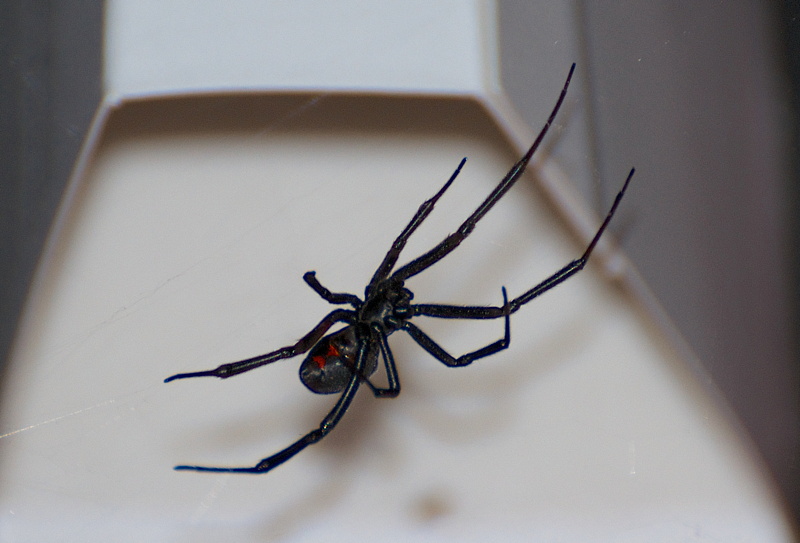
At 1940 MST, began preparations for imaging the quasar 3C273. I had imaged it on 10 April 2013, but I was not able to capture the jet from the quasar, so I wanted to try again. At 2018 MST, I began trying to observe the quasar with the 8" LX200-ACF, 83X and 222X. I might have seen it but I could not be certain. I mounted the D7000 DSLR at prime focus using the off-axis guider (OAG). Did a focus test with the Bahtinov Mask on the star Spica. I had to slew a lot to find a guide star for imaging the quasar; got a very faint star. Did a guided 10 minute, ISO 6400. Unfortunately, to get the guide star I had moved the quasar out of the camera field-of-view (FOV). Re-oriented the camera, did another focus test, and this time found a good guide star with minimal slewing to center it in the illuminated reticle eyepiece on the OAG. Did another guided 10 minute, ISO 6400, exposure, with this result:
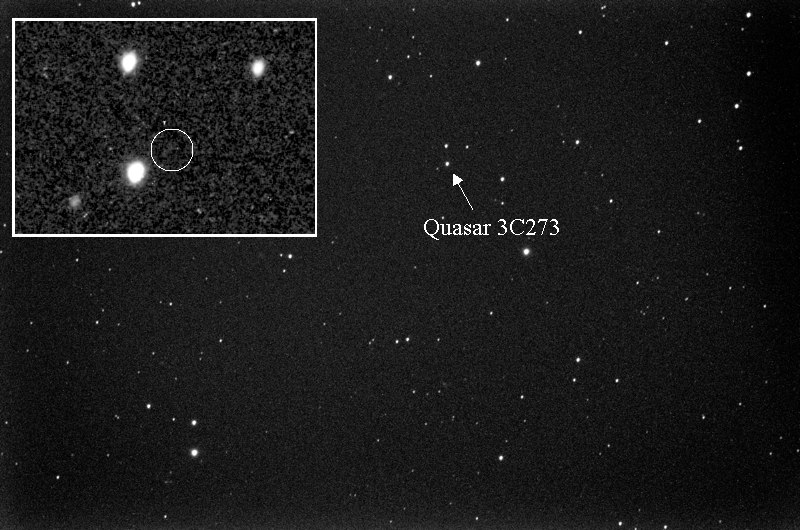
Quasar 3C273 is arrowed in the full-frame image. The circled object in the magnified inset shows what might be the jet from the quasar. The position and orientation are correct for the jet, so maybe I did capture the jet from Quasar 3C273 using a DSLR.
I next did some more tests with the IDA Dark Sky Meter Lite app on my iPhone 4 well after the end of astronomical twilight with no moon in the sky or near rising. I did a brief review of the app on the previous report. I received a comment from Scott Kardel from IDA regarding the measurement I obtained on the previous session. He noted that the camera in the iPhone 4 is not as good for dark sky measurements as the one in the iPhone 4S and iPhone 5. This night I seemed to get measurements that confirmed his statement. I took four sky measurements from near the zenith and each one was different, sometimes significantly different:
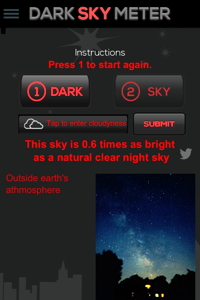
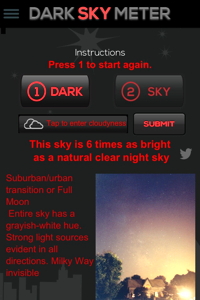
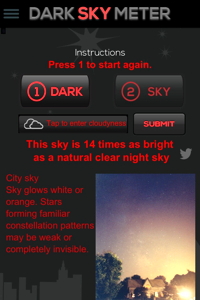
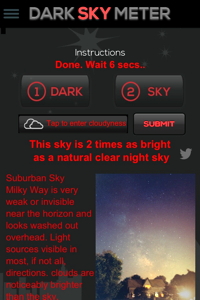
None of the measurements seemed to accurately reflect my dark sky site.
At 2128 MST, I tried again to view quasar 3C273 at 83X. I still couldn't be certain I was seeing it.
At 2156 MST, captured this image of the spectrum of the star Spica using the Star Analyzer with the 8" and D7000 DSLR, 5 seconds (drift method), ISO 100:
![]()
I began viewing Saturn at 2156 MST using 83X. The moons Titan, Dione, Rhea, Tethys, and Iapetus were easily seen. I tried to see Enceladus at 222X and 364X, but it was too close to the planet and lost in the planet's glare.
At 2215 MST, I began doing some deep sky objects (DSO) observing. Viewed the globular clusters M13 and M92, 83X and 222X. Both were gorgeous in the 2" 24mm UWA eyepiece (83X). I then viewed the galaxies M51, M101, M81, and M82 using 83X and 222X. The 24mm eyepiece yielded impressive views of M51 and M82, showing lots of structure.
At 2232 MST, I returned to Saturn; seeing was a little worse. At 2242 MST, viewed Omega Centauri globular cluster and Centaurus A galaxy, with the 2" 24mm eyepiece. Omega Centauri was lovely, but the sky was a little too bright from the rising waning gibbous moon to show the galaxy very well.
I then set up for imaging Saturn using the iPhone 4. This is a single image using the Camera app, afocal 444X, with the MX-1 Afocal Adapter:
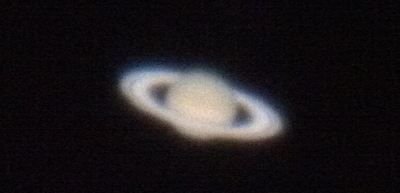
I also did video recordings using FiLMiC Pro on the iPhone 4. This is a stack of 1286 frames (~60 seconds):
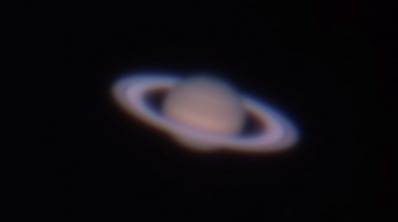
This is a stack of 2568 frames (~120 seconds):
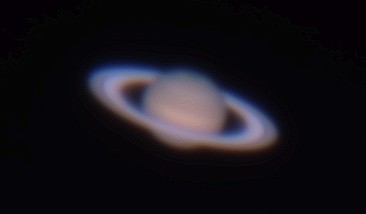
I ended Saturn imaging at 2353 MST. The moon was now visible over the hill to the southeast. I did some more Saturn observing, 364X and 222X. Cassini Division was clearly visible nearly all the way around the Ring. Neat!
At 0016 MST, viewed the moon, 222X. Seeing was not very good (moon still low in the sky), but the southern terminator was very nice. At 0047 MST, took this image (slightly cropped) of the moon using the D7000 DSLR at prime focus + focal reducer:
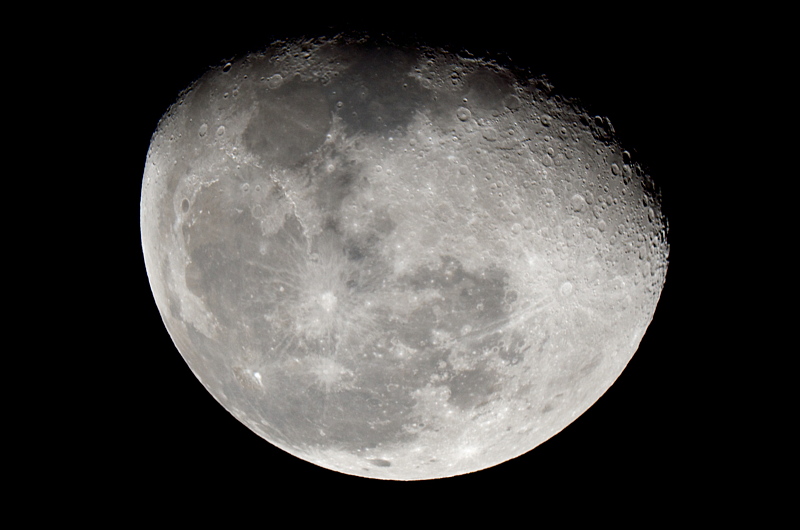
Removed the focal reducer and added a 2X Barlow Lens for this image of the south pole region, "Hat Trick", ISO 100:
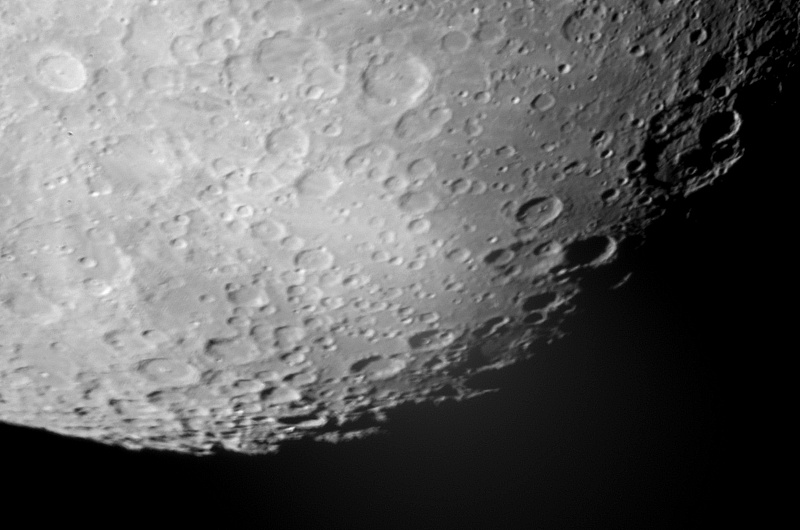
So far, this session had gone pretty well. But the expected highlight of the night was the prediction (by CalSky.org) of a Hubble Space Telescope (HST) transit of the moon at 05:58:27.78 MST:

The previous HST-Moon transit on 29 March 2013 was clouded out. A HST-Sun transit occurred on 22 February 2013, but my attempt to capture the HST crossing the sun was unsuccessful. In preparation for the transit I did some lunar imaging tests. I then put the telescope to sleep, closed the observatory at 0118 MST, and managed to get 3 hours of sleep. I re-opened the observatory at 0436 MST, 64°F. The eastern sky was brightening from the sun. Sunrise was at 0538 MST, just 20 minutes before the transit.
To image the HST-Moon transit, I did a HD video recording with the D7000 DSLR at prime focus of the 8" LX200-ACF. Exposure was 1/2000sec, ISO 3200. Imaging of the transit was successful! This is a magnified view of five frames from the video. The HST crossed the moon from right to left. The arrows mark the HST.

This next sequence of images are the same five frames. See if you can detect the HST.
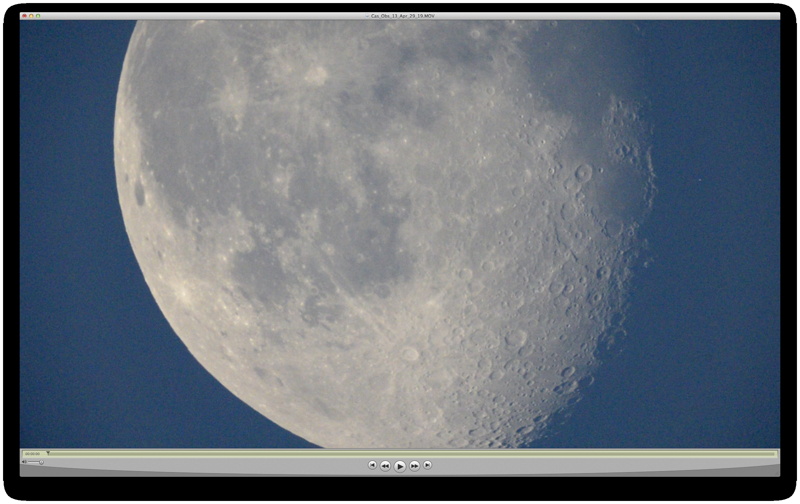
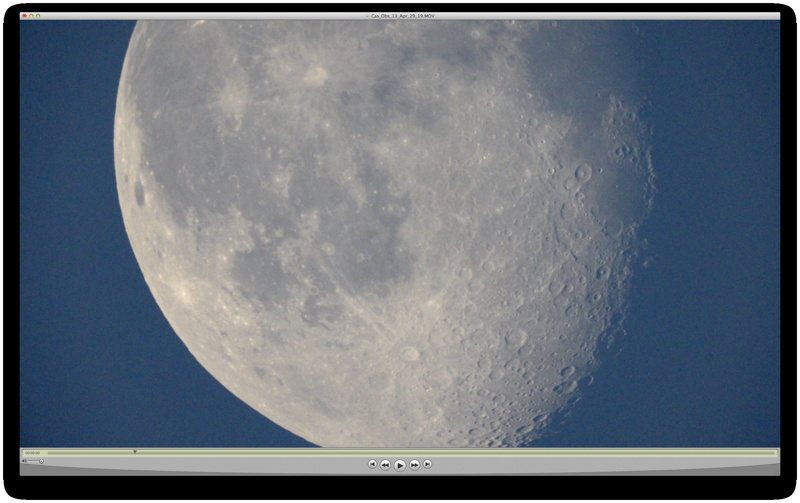
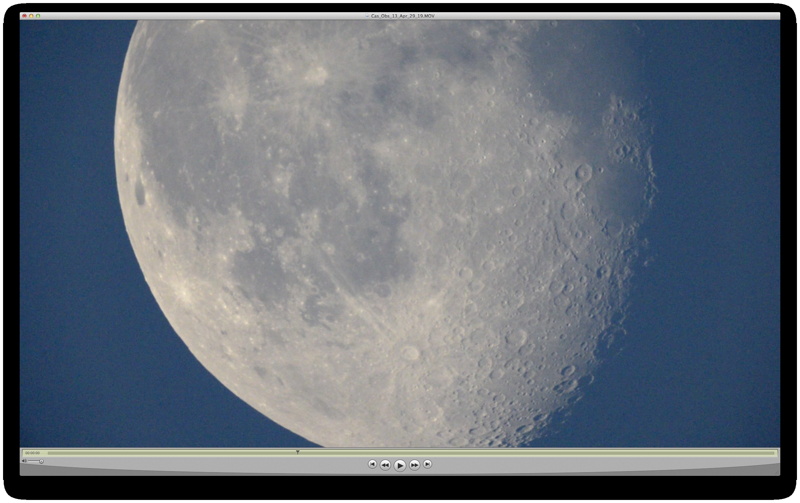
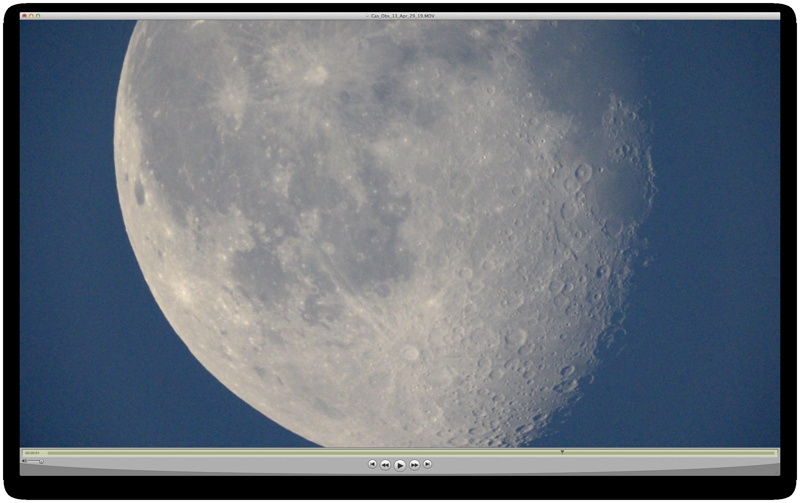
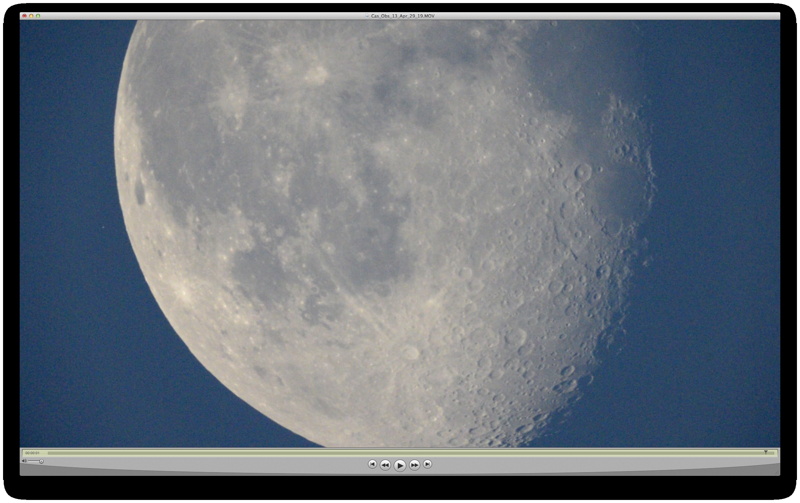
This image is a highly magnified view of the HST crossing the moon. The straight lines show its artificial nature and may be the solar panels.
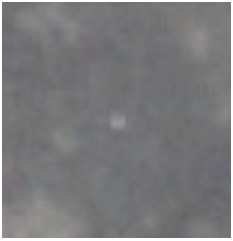
Click HST-Moon transit to view the whole video (1920x1080, 1 second, 14.9 MB). You may find it useful to save the video to your computer or enlarge the window. Step through it by frame to track the HST as it crossed the moon from right to left.
At 0602 MST, I took a quick look at the moon, 83X, and then began closing down.
The observatory was closed at 0614 MST, 66°F. It was a wonderful 8 hour 13 minute session at Cassiopeia Observatory.
Comments are welcome; use the Comments section below, or you can Email Me. Thanks.
Cassiopeia Observatory Home Page